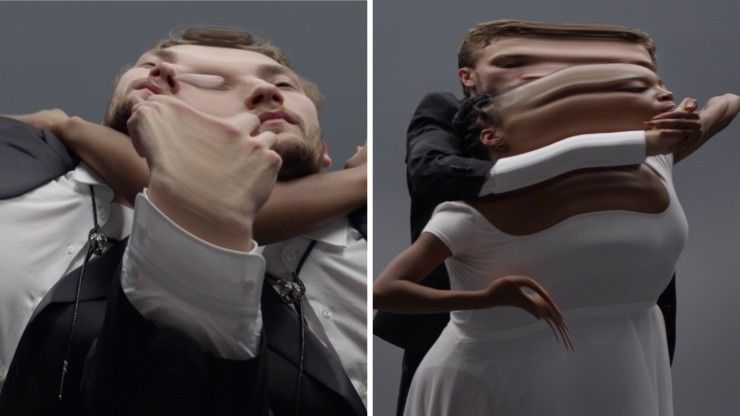Max Telfer
Max Telfer
About Me
EXPERTISE
Technical Director
INDUSTRY
Film/TV
Connect
LOCATION
New Zealand
WEBSITE
Houdini Skills
Availability
Not Specified
Recent Forum Posts
Slitscanning in 3D! Sept. 24, 2019, 3:23 a.m.
Amazing - thank you so much for such a comprehensive scene, tamte!
Lots of learning/experimenting to be done from here, this is invaluable
Lots of learning/experimenting to be done from here, this is invaluable

Slitscanning in 3D! Sept. 23, 2019, 8:29 p.m.
jsmack
ILM did an effect like this for Doctor Strange a few years ago. They gave a very interesting talk at SIGGRAPH 2017 about their technique and development process.
I forget the specifics, but I think they has a few ways that were interesting. I think in the end they did use some sort of geometric slicing, but with volumes. They also showed a more low level render-time option that worked more like a real slitscan.
Interesting - I'll try and hunt that down, and see if I can find any hints as to their workflow. I just realized that the point scatter option might in the long run be far more friendly, culling the point volumes - my initial test had the scatter re-evaluating per frame, whereas obviously it'd speed up a ton if I initially cached out a single hi res pass, and used that instead. Meshing those points would likely provide a smoother silhouette, too. I'll take a look at this this evening!
mestela
Yeah, you could write a lens shader to sweep the camera position along a path. When I was playing with creating stereo pano cameras I mention this, and the gamedev imposter generator would have code to look at as well.
My notes:
http://www.tokeru.com/cgwiki/index.php?title=HoudiniOculusWip [www.tokeru.com]
Thanks for this! Coincidentally, the end goal I had in mind was actually a spherical render output for VR - after wanting to orbit around the 2D slitscans that I'd otherwise been creating. Might have to dive in to this a little later down the track, would be curious to see what kind of render times you could get.
But yes, within the initial scene - fundamentally I think I'm still a little lost as to how to elegantly copy each slice, with the slicer/time offset adjusting exponentially. Definitely down to a lack of node knowledge on my part, so will have to keep digging!
Slitscanning in 3D! Sept. 23, 2019, 4:55 a.m.
Hello all!
I'm currently looking in to creating a 3D version of the classic slit scan effect, which typically is achieved via Processing/After Effects. An outline of the kind of output (and the theory behind it) is outlined here:
2D slitscanning ref! [nofilmschool.com]

The basic theory is to do the following to build up the effect:
1. Create a thin slice of an animated figure
2. Duplicate this thin slice - while offsetting the position of the slice, and offsetting the animated figures animation cache by an increasing amount per frame
3. Repeat
For the initial slicing - I tried scattering points upon the surface, and using a removepoint to cull points where they weren't wanted. I unfortunately found it far too expensive when scattered upon a higher res mesh, though.
So - in the scene below I've got a simple boolean, which hacks out a nice slice and is relatively quick. (But is providing random errors, which you can see in the playblast below.) Curious to know if anyone has any more efficient/stable recommendations, though!
The scene is crudely working - but unfortunately is extremely brute force and manual in its setup. I'm simply copy and pasting individual slices, and manually adjusting the timeshift/transform nodes for each. I've made some rudimentary explorations in to instances, and the copy node - but can't quite seem to put all the pieces together when it comes to getting the timeshift/transform values to propagate as expected!
Any advice, hacking to pieces of my scene would be greatly appreciated! I'm sure it's a relatively simple solution - I'm just brand new to Houdini unfortunately, ahah.
Thanks, and looking forward to hearing from you!
Alembic file for scene [drive.google.com]
Playblast [drive.google.com]
Max
I'm currently looking in to creating a 3D version of the classic slit scan effect, which typically is achieved via Processing/After Effects. An outline of the kind of output (and the theory behind it) is outlined here:
2D slitscanning ref! [nofilmschool.com]

The basic theory is to do the following to build up the effect:
1. Create a thin slice of an animated figure
2. Duplicate this thin slice - while offsetting the position of the slice, and offsetting the animated figures animation cache by an increasing amount per frame
3. Repeat
For the initial slicing - I tried scattering points upon the surface, and using a removepoint to cull points where they weren't wanted. I unfortunately found it far too expensive when scattered upon a higher res mesh, though.
So - in the scene below I've got a simple boolean, which hacks out a nice slice and is relatively quick. (But is providing random errors, which you can see in the playblast below.) Curious to know if anyone has any more efficient/stable recommendations, though!
The scene is crudely working - but unfortunately is extremely brute force and manual in its setup. I'm simply copy and pasting individual slices, and manually adjusting the timeshift/transform nodes for each. I've made some rudimentary explorations in to instances, and the copy node - but can't quite seem to put all the pieces together when it comes to getting the timeshift/transform values to propagate as expected!
Any advice, hacking to pieces of my scene would be greatly appreciated! I'm sure it's a relatively simple solution - I'm just brand new to Houdini unfortunately, ahah.
Thanks, and looking forward to hearing from you!
Alembic file for scene [drive.google.com]
Playblast [drive.google.com]
Max